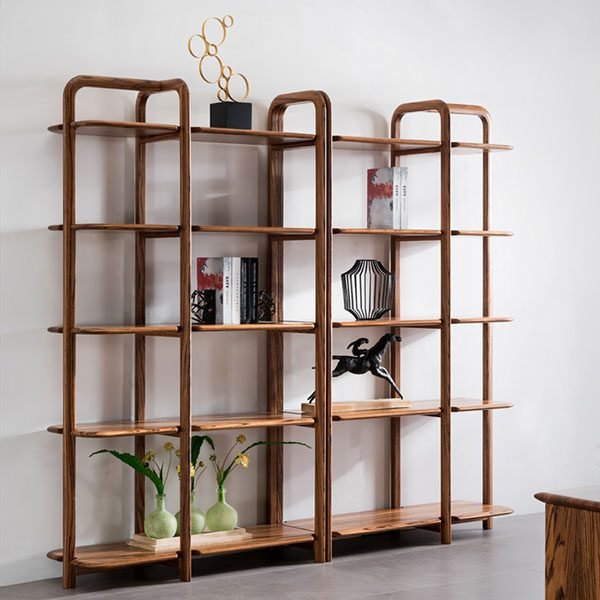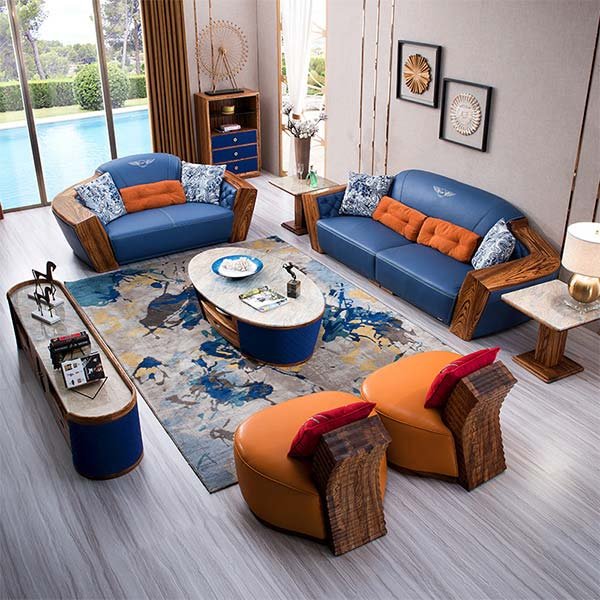“Enhancing your dining experience with style and comfort.”
Choosing the Right Material for Dining Chairs
Dining Chairs: Balancing Aesthetics and Functionality
Choosing the Right Material for Dining Chairs
When it comes to furnishing your dining room, one of the most important decisions you’ll have to make is choosing the right material for your dining chairs. The material you choose will not only affect the overall aesthetics of your dining space but also determine the functionality and durability of your chairs. In this article, we will explore some popular materials for dining chairs and discuss their pros and cons.
Wood is a classic choice for dining chairs, and for good reason. It offers a timeless and elegant look that can complement any dining room decor. Wood chairs are also known for their durability and sturdiness, making them a great long-term investment. However, it’s important to note that different types of wood have different levels of durability. Hardwoods like oak and maple are highly durable and resistant to wear and tear, while softwoods like pine may be more prone to scratches and dents.
Metal is another popular material for dining chairs, especially in modern and industrial-style dining rooms. Metal chairs are known for their sleek and minimalist design, which can add a contemporary touch to your dining space. They are also lightweight and easy to clean, making them a practical choice for busy households. However, metal chairs may not be as comfortable as their cushioned counterparts, so it’s important to consider the comfort factor before making a decision.
Upholstered dining chairs are a great option if you prioritize comfort above all else. These chairs are typically padded and covered in fabric or leather, providing a plush seating experience. Upholstered chairs also offer endless design possibilities, as you can choose from a wide range of fabrics and patterns to match your dining room decor. However, it’s important to keep in mind that upholstered chairs require regular maintenance and may be more prone to stains and spills.
Plastic chairs are a budget-friendly option that is easy to clean and maintain. They are lightweight and stackable, making them a practical choice for small dining spaces or for those who frequently host large gatherings. Plastic chairs are also available in a variety of colors and styles, allowing you to add a pop of color to your dining room. However, it’s important to note that plastic chairs may not offer the same level of durability as other materials, and they may not be as comfortable for long periods of sitting.
In conclusion, choosing the right material for your dining chairs is a crucial decision that will impact both the aesthetics and functionality of your dining space. Wood offers a timeless and durable option, while metal adds a modern touch. Upholstered chairs prioritize comfort, while plastic chairs are a budget-friendly choice. Consider your personal preferences, lifestyle, and the overall design of your dining room when making your decision. By finding the perfect balance between aesthetics and functionality, you can create a dining space that is both visually appealing and comfortable for years to come.
Incorporating Ergonomics in Dining Chair Design
Incorporating Ergonomics in Dining Chair Design
When it comes to dining chairs, aesthetics and functionality are two key factors that designers must consider. However, one aspect that is often overlooked is ergonomics. Ergonomics plays a crucial role in ensuring that dining chairs are not only visually appealing but also comfortable and supportive for users. In this article, we will explore the importance of incorporating ergonomics in dining chair design.
First and foremost, let’s define what ergonomics is. Ergonomics is the science of designing products and environments to fit the needs and capabilities of the people who use them. In the context of dining chairs, it involves creating seating solutions that promote good posture, reduce discomfort, and enhance overall well-being.
One of the key elements of ergonomic dining chair design is proper lumbar support. The lumbar region of the spine is particularly vulnerable to strain and discomfort when sitting for extended periods. Therefore, dining chairs should have a curved backrest that follows the natural curve of the spine, providing adequate support to the lower back. This helps to maintain a healthy posture and prevent back pain.
Another important aspect of ergonomic dining chair design is seat height. The height of the chair should be such that the user’s feet can rest flat on the floor, with knees bent at a 90-degree angle. This promotes proper blood circulation and reduces the risk of developing leg discomfort or numbness. Adjustable seat height options are ideal as they allow users to customize the chair to their specific needs.
Furthermore, the seat depth of a dining chair is also crucial for ergonomic design. The seat should be deep enough to support the user’s thighs without putting excessive pressure on the back of the knees. Additionally, the seat should have a slight slope downwards to prevent users from sliding forward, ensuring a stable and comfortable sitting position.
Incorporating armrests in dining chair design is another way to enhance ergonomics. Armrests provide support to the arms and shoulders, reducing strain on these areas. However, it is important to ensure that the armrests do not hinder the user’s ability to move freely or push the chair closer to the dining table. Adjustable or removable armrests can be a practical solution to accommodate different user preferences.
Lastly, the choice of materials and cushioning in dining chair design can greatly impact ergonomics. The seat and backrest should be adequately padded to provide comfort and support. High-quality foam or memory foam can be used to ensure optimal cushioning. Additionally, breathable and durable upholstery materials should be chosen to promote air circulation and longevity.
In conclusion, incorporating ergonomics in dining chair design is essential for creating comfortable and supportive seating solutions. Proper lumbar support, seat height, seat depth, armrests, and cushioning are all important considerations. By prioritizing ergonomics alongside aesthetics and functionality, designers can create dining chairs that not only look great but also promote the well-being of users. So, the next time you’re shopping for dining chairs, remember to look beyond their appearance and consider their ergonomic features for a truly satisfying dining experience.
Exploring Different Styles and Designs of Dining Chairs
Dining Chairs: Balancing Aesthetics and Functionality
When it comes to furnishing your dining room, one of the most important pieces to consider is the dining chairs. Not only do they provide a place for you and your guests to sit during meals, but they also play a significant role in the overall aesthetics of the room. Finding the perfect balance between aesthetics and functionality is crucial. In this article, we will explore different styles and designs of dining chairs, helping you make an informed decision for your dining space.
One popular style of dining chairs is the classic wooden design. These chairs exude a timeless elegance and can fit seamlessly into any dining room decor. Whether you prefer a traditional or modern look, wooden chairs can be easily customized with different finishes and upholstery options. Additionally, they are known for their durability and sturdiness, making them a practical choice for families with children or frequent entertainers.
For those looking to add a touch of sophistication to their dining room, upholstered dining chairs are an excellent choice. These chairs offer both comfort and style, with a wide range of fabric options available. From luxurious velvet to durable leather, you can choose a material that suits your taste and lifestyle. Upholstered chairs also provide an opportunity to introduce patterns and textures into your dining space, adding visual interest to the room.
If you prefer a more contemporary look, consider opting for dining chairs with sleek metal frames. Metal chairs can add a modern and industrial touch to your dining room, creating a chic and minimalist atmosphere. They are also lightweight and easy to clean, making them a practical choice for busy households. To enhance comfort, you can choose chairs with padded seats or cushions, ensuring that your guests can enjoy their meals without any discomfort.
Another popular trend in dining chair design is the use of mixed materials. Chairs that combine different materials, such as wood and metal or wood and plastic, can create a unique and eclectic look. These chairs often feature interesting shapes and textures, making them a focal point in the room. By mixing materials, you can add visual interest and create a dynamic and inviting dining space.
When selecting dining chairs, it is essential to consider the size and layout of your dining room. If you have a small space, opt for chairs with a slim profile to maximize the available space. Alternatively, if you have a large dining area, you can experiment with different chair styles and sizes to create a visually appealing arrangement. Additionally, consider the height of the chairs in relation to your dining table to ensure a comfortable seating experience.
In conclusion, dining chairs play a crucial role in balancing aesthetics and functionality in your dining room. Whether you prefer classic wooden chairs, upholstered chairs, metal frames, or mixed materials, there are numerous styles and designs to choose from. By considering the size and layout of your dining space, as well as your personal preferences, you can find the perfect dining chairs that not only enhance the overall aesthetics of the room but also provide comfort and functionality for you and your guests.
Заключение
Заключение: При выборе обеденных стульев важно учитывать как их эстетическую привлекательность, так и функциональность. Хорошие обеденные стулья должны сочетать в себе комфорт, поддержку спины и прочность, чтобы обеспечить удобство и безопасность во время приема пищи. Одновременно они должны быть стильными и соответствовать общему дизайну интерьера. Правильный баланс между эстетикой и функциональностью обеспечит удовлетворение потребностей и визуальное удовольствие при использовании обеденных стульев.



